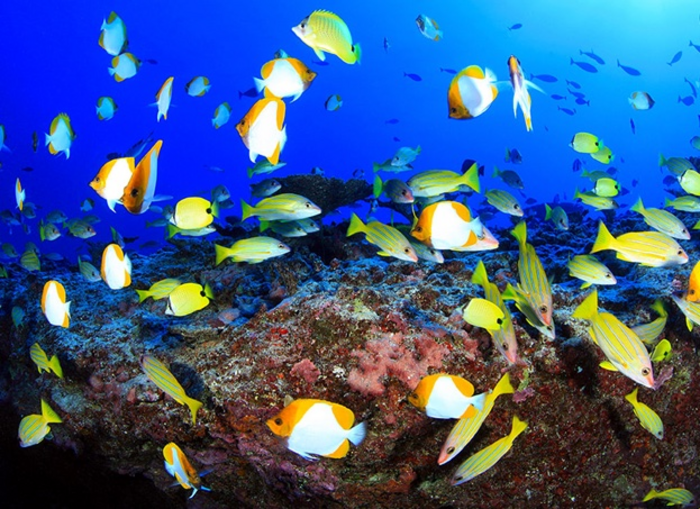A previously overlooked factor — the position of continents — helps fill Earth’s oceans with life-supporting oxygen. Continental movement could ultimately have the opposite effect, killing most deep ocean creatures.

Credit: (Greg McFall, NOAA)
A previously overlooked factor — the position of continents — helps fill Earth’s oceans with life-supporting oxygen. Continental movement could ultimately have the opposite effect, killing most deep ocean creatures.
“Continental drift seems so slow, like nothing drastic could come from it, but when the ocean is primed, even a seemingly tiny event could trigger the widespread death of marine life,” said Andy Ridgwell, UC Riverside geologist and co-author of a new study on forces affecting oceanic oxygen.
The water at the ocean’s surface becomes colder and denser as it approaches the north or south pole, then sinks. As the water sinks, it transports oxygen pulled from Earth’s atmosphere down to the ocean floor.
Eventually, a return flow brings nutrients released from sunken organic matter back to the ocean’s surface, where it fuels the growth of plankton. Both the uninterrupted supply of oxygen to lower depths and organic matter produced at the surface support an incredible diversity of fish and other animals in today’s ocean.
New findings led by researchers based at UC Riverside have found this circulation of oxygen and nutrients can end quite suddenly. Using complex computer models, the researchers investigated whether the locations of continental plates affect how the ocean moves oxygen around. To their surprise, it does.
This finding, published today, is detailed in the journal Nature.
“Many millions of years ago, not so long after animal life in the ocean got started, the entire global ocean circulation seemed to periodically shut down,” said Ridgwell. “We were not expecting to find that the movement of continents could cause surface waters and oxygen to stop sinking, and possibly dramatically affecting the way life evolved on Earth.”
Until now, models used to study the evolution of marine oxygen over the last 540 million years were relatively simple and did not account for ocean circulation. In these models, ocean anoxia — times when oceanic oxygen disappeared — implied a drop in atmospheric oxygen concentrations.
“Scientists previously assumed that changing oxygen levels in the ocean mostly reflected similar fluctuations in the atmosphere,” said Alexandre Pohl, first author of the study and former UCR paleoclimate modeler, now at Université Bourgogne Franche-Comté in France.
This study used, for the first time, a model in which the ocean was represented in three dimensions, and in which ocean currents were accounted for. Results show that collapse in global water circulation lead to a stark separation between oxygen levels in the upper and lower depths.
That separation meant the entire seafloor, except for shallow places close to the coast, entirely lost oxygen for many tens of millions of years, until about 440 million years ago at the start of the Silurian period.
“Circulation collapse would have been a death sentence for anything that could not swim closer to the surface and the life-giving oxygen still present in the atmosphere,” Ridgwell said. Creatures of the deep include bizarre-looking fish, giant worms and crustaceans, squid, sponges and more.
The paper does not address if or when Earth might expect a similar event in the future, and it is difficult to identify when a collapse might occur, or what triggers it. However, existing climate models confirm that increasing global warming will weaken ocean circulation, and some models predict an eventual collapse of the branch of circulation that starts in the North Atlantic.
“We’d need a higher resolution climate model to predict a mass extinction event,” Ridgwell said. “That said, we do already have concerns about water circulation in the North Atlantic today, and there is evidence that the flow of water to depth is declining.”
In theory, Ridgwell said an unusually warm summer or the erosion of a cliff could trigger a cascade of processes that upends life as it appears today.
“You’d think the surface of the ocean, the bit you might surf or sail on, is where all the action is. But underneath, the ocean is tirelessly working away, providing vital oxygen to animals in the dark depths,” Ridgwell said.
“The ocean allows life to flourish, but it can take that life away again. Nothing rules that out as continental plates continue to move.”
Journal
Nature
DOI
10.1038/s41586-022-05018-z
Method of Research
Computational simulation/modeling
Article Title
Continental configuration controls ocean oxygenation during the Phanerozoic
Article Publication Date
17-Aug-2022




